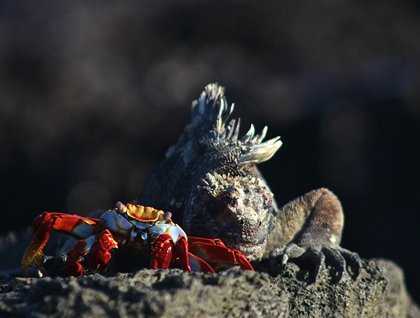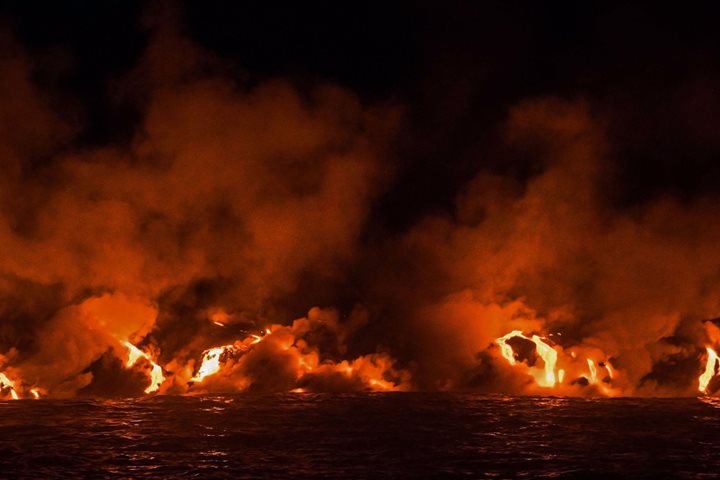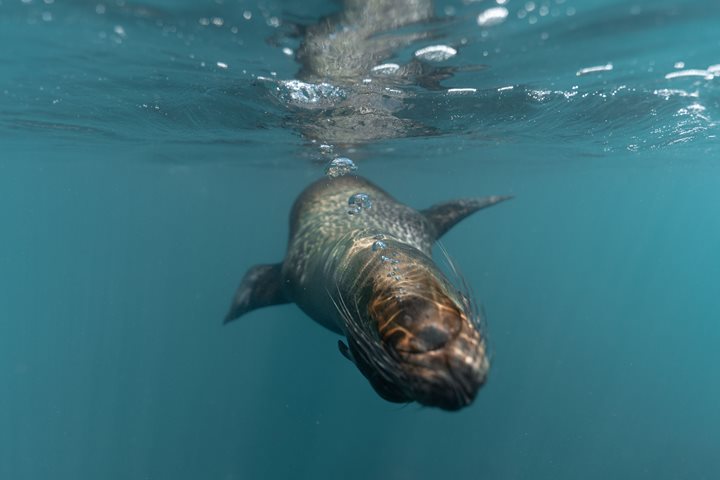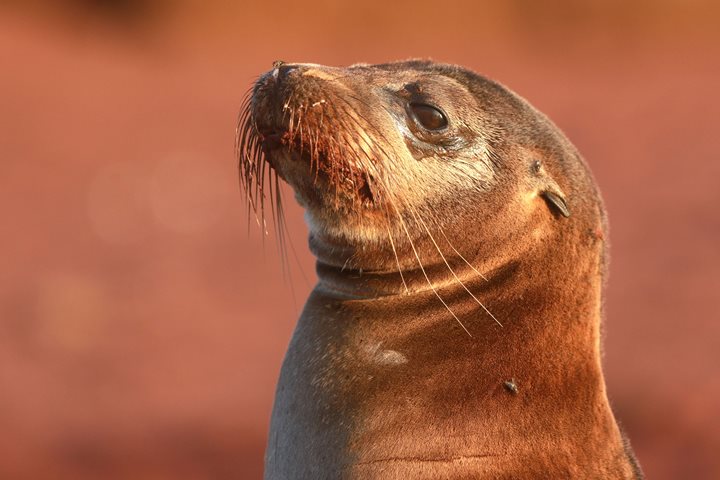We started our day with an early activity—a visit to Espumilla Beach. This beach has a mile-long trail over a mangrove and a “Palo santo” forest. The “Palo santo”, or incense trees, are native for the Americas, but outside Galapagos they are considered to be endangered. Here in this archipelago they are protected and abundant along the arid zone of every island. During the dry season, which runs from June to December, they give the impression of a ghostly appearance, because they dropped their leaves to save water. And during the warmer wet season they bloom with beautiful green leaves and white flowers. The seeds from incense trees can be dormant for many years until they find the right weather conditions to germinate. While some of us were hiking, we also offered a round of kayaking. Because this location has very interesting geological formations along the coast, it’s a good place to observe shore birds, such as pelicans, boobies, turtles, and Galapagos sea lions.
To finish our morning activity, we sailed for a short distance toward Buccaneer’s Cove and as soon as we dropped anchor we went out for deep water snorkeling. Zodiac rides were also offered, to close out our extraordinary morning activity. During the Zodiac ride, we spotted Nazca boobies, swallow-tailed gulls, and blue-footed boobies resting on the titan cinder cliffs.
For the afternoon we offered our final activity at a very interesting visitor site known as Puerto Egas. Some of us chose to disembark earlier on a black sandy beach. Snorkeling from the beach was outstanding, and some rays, sea lions, and a large variety of fish were spotted. The hike is one of the most interesting in the area—for migratory shore bird observation, piles of marine iguanas, invertebrates, boobies, pelicans, and the two species of sea lions found in Galapagos.







